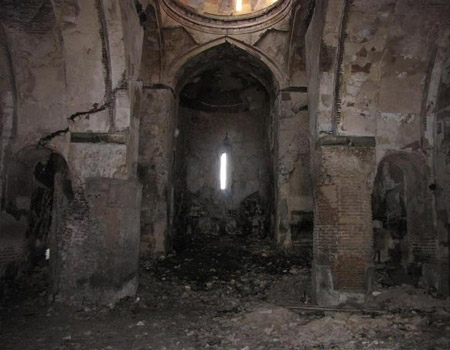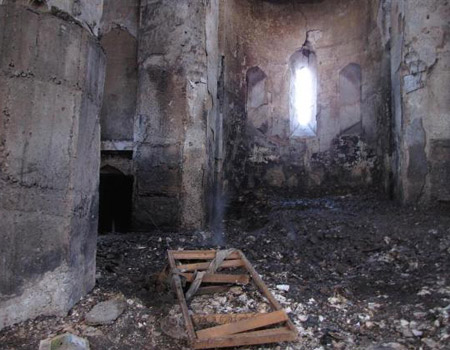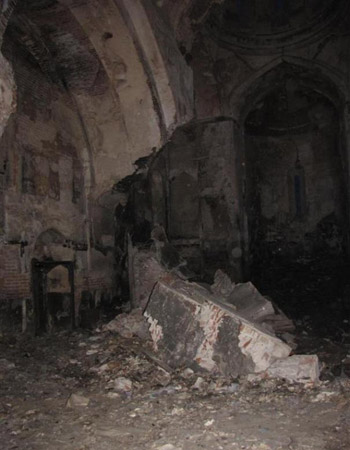The Armenian Church of the Holy Seal (Surb Nshan) in Old Tbilisi, Georgia, caught fire twice this year — on Jan. 2 and 9. Georgian authorities assert the fires resulted from children lighting fireworks.
Head of the Armenian office of the organization Research on Armenian Architecture Samvel Karapetyan, however, is not so sure. There was another fire in the 18th-century church in 2002. The fire was put out, but the water used to douse the flames had its devastating consequences. Only a few weeks later, cracks were seen on the church walls, while later, the plaster caved in, destroying the murals.
This year’s fires were also put out with water. For a structure with a dilapidated foundation, this is simply a catastrophe, said Karapetyan.
A book on Armenian monuments and Georgian policy was published in 1998. “If I were to publish that book today, it would be four times as big. The process of eroding Armenian monuments is sponsored by the Georgian authorities. The Georgians continue to consider all Armenian monuments to be Georgian and appropriated by the Armenians. They have the same claims on the Church of the Holy Seal. They cite arguments that supposedly an Armenian church cannot be in the name of St. Nikoghayos [of the Church of the Holy Seal],” he said.
Karapetyan pointed out that there were churches named after St. Nikoghayos in historic Armenia. The image of this saint is also at the Dadivank Monastery in the Nagorno-Karabakh Republic.
In order to save the Church of the Holy Seal, according to Karapetyan, first and foremost the destroyed column has to be restored, which hasn’t been done yet. “And they’re not particularly rushing to do it. Instead of working, the Georgians now are actively discussing the issue of who the church belongs to. As soon as the church is collapses, they will declare that it was Armenian.”
Main photo: Felix Khachatrian (Wikimedia Commons)
Remaining photos: The Armenian Church (Mother See of Holy Etchmiadzin)
 Epress.am News from Armenia
Epress.am News from Armenia


